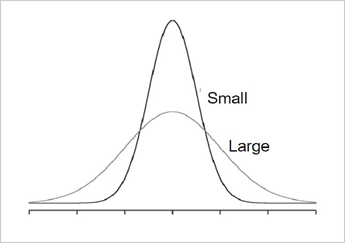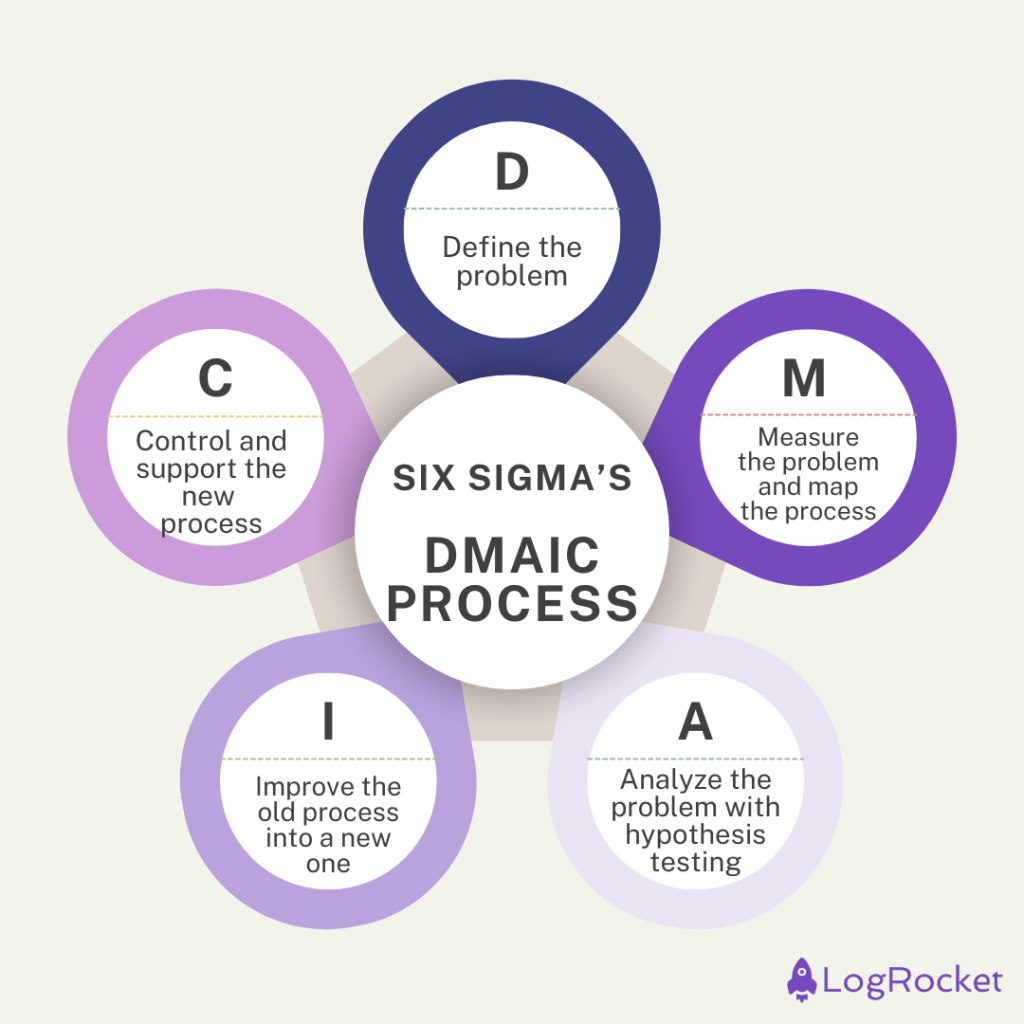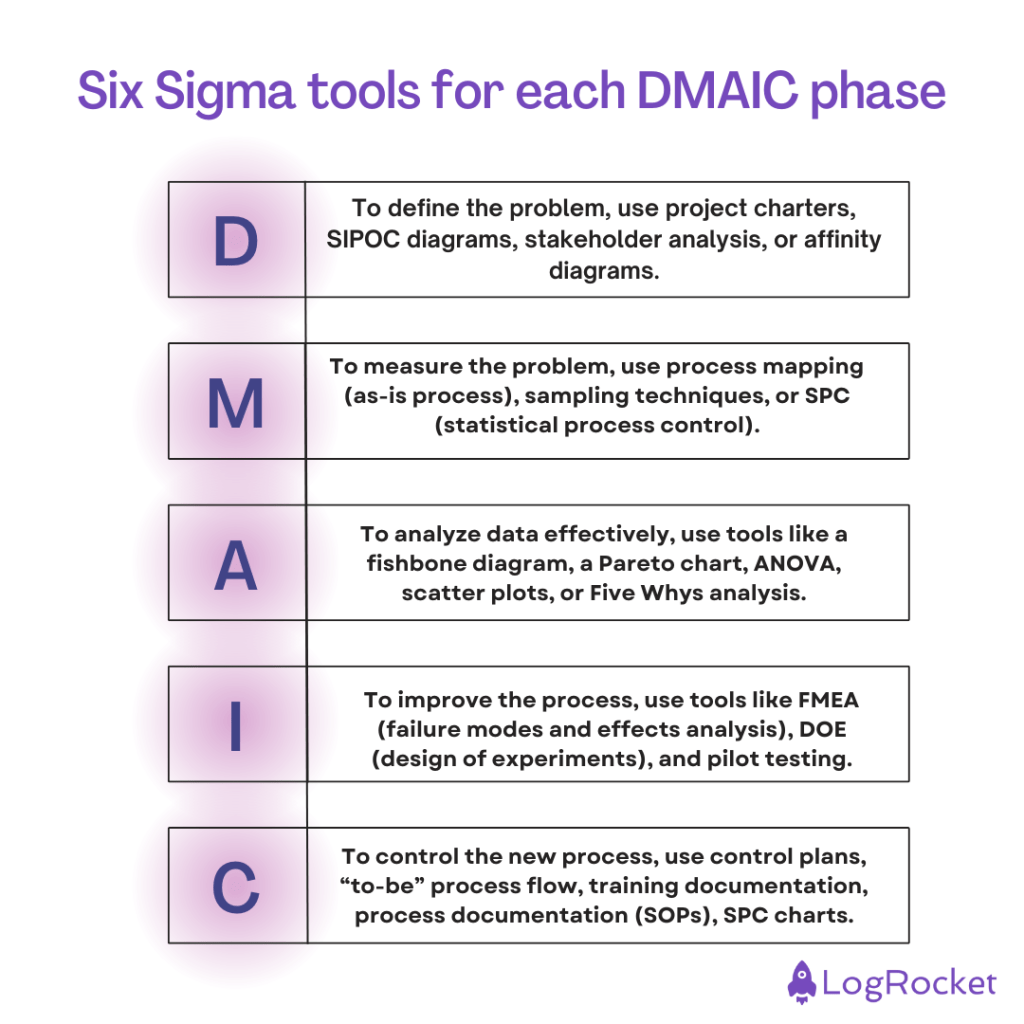
My first job out of college was in a semiconductor fabrication plant or fab, and Six Sigma was heavily promoted there. I worked with some very skilled Six Sigma coaches and earned a Six Sigma Black Belt for saving my company over $3M.
Despite transitioning from manufacturing to product management, I’ve found the Six Sigma approach and its DMAIC tools to be incredibly useful. It is, essentially, a structured way to solve problems and implement lasting solutions.
So, if you’re a product manager looking to improve your structured problem-solving or analytical skills, this article is for you. I will review the DMAIC process, its benefits, and how it can be applied in product management.
In statistics, a sigma symbol represents the standard deviation of variance in a data distribution. A higher sigma value means higher variation in your data. So, a Six Sigma quality means that the process is so good that it will have only 3.4 defects per one million opportunities.
The goal of the Six Sigma is to reduce the variance in your process by improving the quality, reliability, and output of your product or service offering:

Six Sigma uses the DMAIC methodology to identify and solve problems while focusing on variance reduction. DMAIC stands for define, measure, analyze, improve, and control.
If DMAIC had a slogan, it would say, “If you can measure it, you can manage it.” The DMAIC process centers around problem-solving using five steps:

Each of the DMAIC phases requires you to see the world through the eyes of a scientist and the lens of experimentation. In this section, I’ll go deeper into the phases and detail which Six Sigma tools are used in each:
To improve and control something, you will first need to validate the problem and why it is happening. You will have to spend a considerable amount of time writing out a clear problem statement. In addition to defining the problem, you will want to gain sponsorship to execute your project, ideally from an executive. This helps ensure you achieve the support and resources you need to put your project into play.
For this first step of DMAIC, you can use tools like project charters, SIPOC diagrams, stakeholder analysis, or affinity diagrams.
After you settle on a problem statement, you will need to measure the problem and collect observations or data points. In some cases, you’ll have those data points; in others, you might need to set up a measurement system to capture missing data. The key here is to determine your inputs and outputs or, as I like to say, your “x’s and your y’s.”
To measure the problem, I recommend using Six Sigma tools like process mapping (as-is process), sampling techniques, or SPC (statistical process control).
This is the most exciting step of the process, especially for analytical product managers and engineers. It is during this phase that you will need to analyze the data you’ve collected about your process and perform hypothesis testing. Validate or invalidate your problem hypothesis by running your data through statistical tests. If you do not have statistical data, complete qualitative analyses to prove or disprove your hypothesis.
To effectively analyze data, use tools like a fishbone diagram, a Pareto chart, ANOVA, scatter plots, or Five Whys analysis.
The next phase of DMAIC is where you gather your stakeholders to review the work you’ve done so far, ground them in the problem, and begin brainstorming potential solutions.
The key to this phase is building a shared understanding of the problem with a diverse, cross-functional team. It’s important to have a diverse team because increasing levels of diversity will result in diverse ideas and potential solutions.
In this phase, you and your cross-functional team will need to draw up concepts and test them to improve the process. In tech, most people would refer to this phase as “running a pilot.” Use tools like FMEA (failure modes and effects analysis), DOE (design of experiments), and pilot testing.
The final phase of DMAIC involves developing a “to-be” process, transition change management, and implementing a control plan to ensure the “to-be” process doesn’t break.
In most industries, the new process will involve people, so you will need to provide documentation, training, and support. Plus, some individuals might not like change, so you may want to partner with professionals from transition change management to help you.
In addition to implementing the change, you will need to put monitors, controls, and response flows in place to ensure the new process does not go off the rails. To do this effectively, I’d recommend tools like control plans, “to-be” process flow, training documentation, process documentation (SOPs), SPC charts.

I found the following Six Sigma and DMAIC aspects to have great benefits for product managers in terms of:
When using the DMAIC methodology, keep the following best practices top of mind:
In many ways, DMAIC and product management may seem like apples and oranges, but when you look a little deeper, you can see some overlap between the two.
While DMAIC doesn’t bring as much creativity, it does bring a structured methodology to problem-solving. In addition, modern product managers need analytical skills that complement their product sense and execution skills.
For those product managers who don’t have an analytics background, Six Sigma offers green and black belt training programs that can provide hands-on analytics training and experience.
For those product managers with an analytics background, I hope this article provided some useful insights and tools you can bring into your next analysis.
gd2md-html: xyzzy Fri Aug 09 2024

LogRocket identifies friction points in the user experience so you can make informed decisions about product and design changes that must happen to hit your goals.
With LogRocket, you can understand the scope of the issues affecting your product and prioritize the changes that need to be made. LogRocket simplifies workflows by allowing Engineering, Product, UX, and Design teams to work from the same data as you, eliminating any confusion about what needs to be done.
Get your teams on the same page — try LogRocket today.

A practical guide for PMs who want to stop being bottlenecks, delegate smarter, and lead teams effectively with a clear ownership framework.

Stop letting unreliable data block features. Treat data as inventory to track quality, ownership, and ship with confidence.

Learn why slide decks slow teams down and explore better tools like whiteboards, PRDs, and prototypes to improve collaboration and alignment.

AI PM roles are evolving fast. Learn the five types of AI PMs, the skills they need, and how they shape AI products across industries.